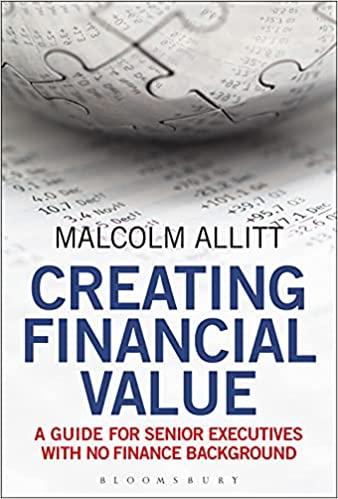Answered step by step
Verified Expert Solution
Question
1 Approved Answer
LIN Broadcasting was appraised in early 2 0 X 9 by three investment bankers to determine the appropriate price on a takeover by AT&T .
LIN Broadcasting was appraised in early X by three investment bankers to determine the appropriate price on a takeover by AT&T The three appraisals came in at $ by Morgan Stanley for AT&T $ by Lehman Brothers for LIN Broadcasting, and a compromise valuation by Wasserstein Perella of $ LIN Broadcasting is a fastgrowing firm in a fastgrowing industry segment. Revenues are expected to grow to a year for the next few years. The firm has never made a profit after taxes, even though it has posted high growth, because it has had high leverage and nonoperating expenses. Prior to these charges however, it earned an operating income of $ million in X Thus, although the FCFE is negative, the FCFF is positive. Finally, the financial leverage is high but can be expected to decline as the industry stabilises. The riskfree rate is and the market risk premium is Given the following background information, compute the value of LIN Broadcasting if there are shares outstanding and the value of debt outstanding is $ million? The firms tax rate is
The background information on LIN Broadcasting is as follows: Current Earnings:
EBIT in X $m Revenue $ m Capital expenditure in X $m Depreciation & Amortisation in X $m Working capital was about of revenues in X
Inputs for the highgrowth period.
Length of the highgrowth period years Expected growth rate in revenuesEBIT Financing Details:
Beta during the high growth period
The firm will continue to use debt heavily during this period Debt Ratio at a pretax cost of debt of
Capital expenditure and Depreciation are expected to grow at the same rate as revenues and EBIT
Working Capital will remain at of revenues during this period
Inputs for the transition period
Length of the transition period years
Growth rate in EBIT will decline from in year to in year in linear increments Capital expenditure will grow at a year, and depreciation will grow at a year during the transition period
Financing Details:
Beta will drop to for the entire transition period
The debt ratio during this phase will drop to and the pretax cost of debt will be
Working Capital will remain at of revenues during this period
Using the stage dividend discount model question discussed in module as an example, estimate and value the cash flows of the firm for each of the three growth phases using the Free Cash Flow to the Firms FCFF method. use the below inofrmation; Inputs for the Stable Growth period
Expected growth rate in revenue and EBIT
Capital expenditure and depreciation will grow at the same rate as EBIT
Beta during the stable growth period
The debt ratio during this phase and the pretax cost of debt will be Working Capital will remain at of revenues during this period
Step by Step Solution
There are 3 Steps involved in it
Step: 1

Get Instant Access to Expert-Tailored Solutions
See step-by-step solutions with expert insights and AI powered tools for academic success
Step: 2

Step: 3

Ace Your Homework with AI
Get the answers you need in no time with our AI-driven, step-by-step assistance
Get Started


